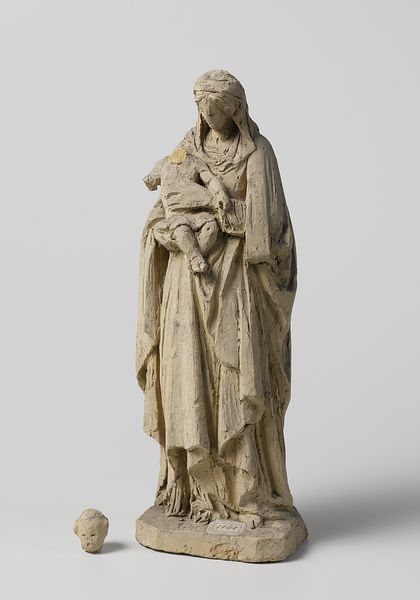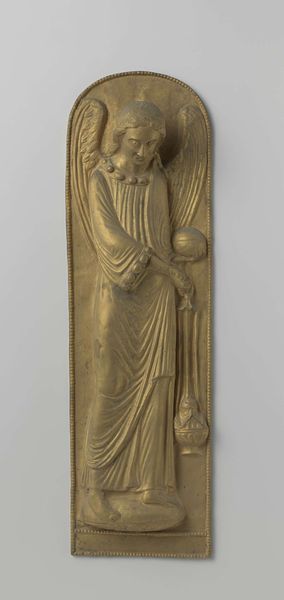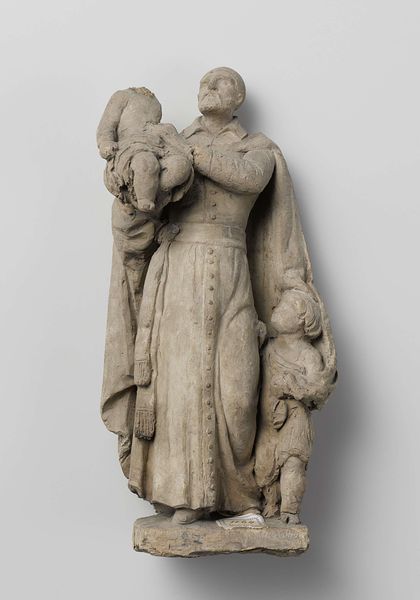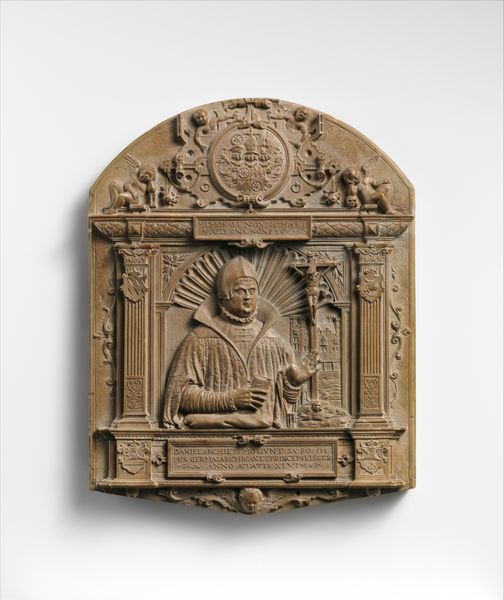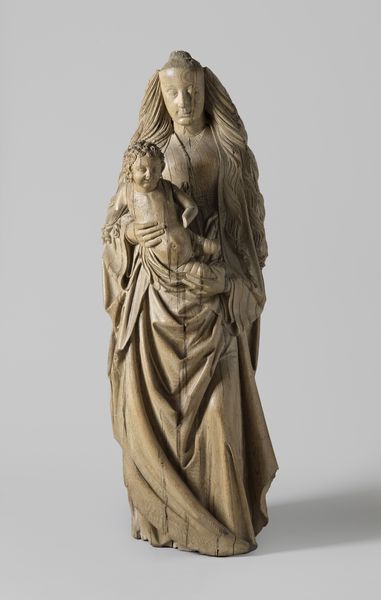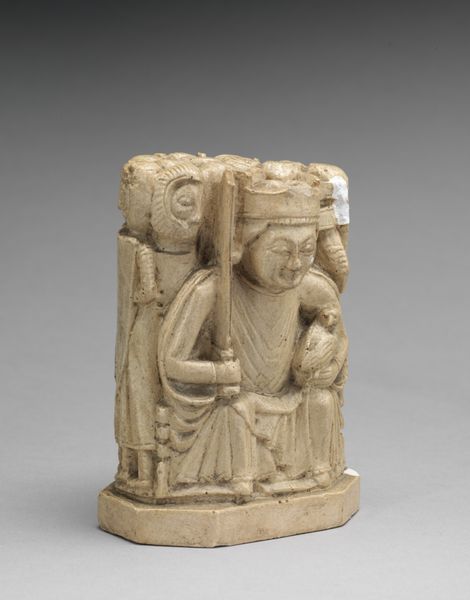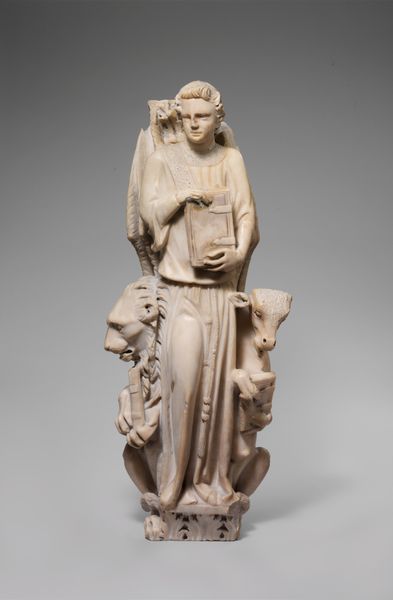
Dimensions: height 86 cm, width 46 cm, thickness 15 cm, weight 61 kg
Copyright: Rijks Museum: Open Domain
Curator: The work before us, carved around 1500, is entitled Saint Augustine. We see a figure sculpted in the round. Editor: He looks serious, burdened somehow. A stoic bishop made of stone. Although, that miniature city he's holding is undeniably charming. Curator: Yes, his gaze is intense. Notice the pronounced verticality emphasized by the mitre, and then reinforced by the cascading folds of his garments, creating a visual hierarchy. Editor: Those cascading folds almost look like an extension of that architectural model he's displaying, don’t they? It’s a city within a robe. He almost seems dwarfed, if not by the city, then by the imposing architectural presence looming in the background. Curator: Observe the careful, deliberate chiseling to create a chiaroscuro effect on both his face and raiment. This manipulates light and shadow to add dimensionality. Editor: The marble feels softened here, it feels inviting—even though the overall subject, given his status, implies an untouchable presence. And I'm drawn to how the folds feel so different between his clothing and his headdress. Is it intentional? Or are we just seeing shifts in technique? Curator: Perhaps both. Such interplay of tactile differentiation could create an intensified visual interest while simultaneously underlining formal constraints of its medium and function. Editor: Which brings us back to the model city...What's he thinking about as he's clutching it? It’s more than just an attribute; there is an implication that maybe, to him, faith represents a tangible city. Curator: It certainly does serve as a powerful emblem—the City of God made manifest, physically represented in miniature form within a classical and subtly idealized framework. Editor: The more you look, the more questions you generate about its form and substance... the marble feels solid, immutable, but the spirit conveyed...suggests flux, fluidity.
Comments
rijksmuseum about 2 years ago
⋮
Augustine, the 4th-century Church Father, is shown here as bishop of the Roman city of Hippo Regius (now Annaba, Algeria). He holds the walled city symbolically in his right hand. Rays of light and an arrow emanate from an angel, an allusion to the rewards accorded to the city as the centre of early Christendom under the bishop.
Join the conversation
Join millions of artists and users on Artera today and experience the ultimate creative platform.
